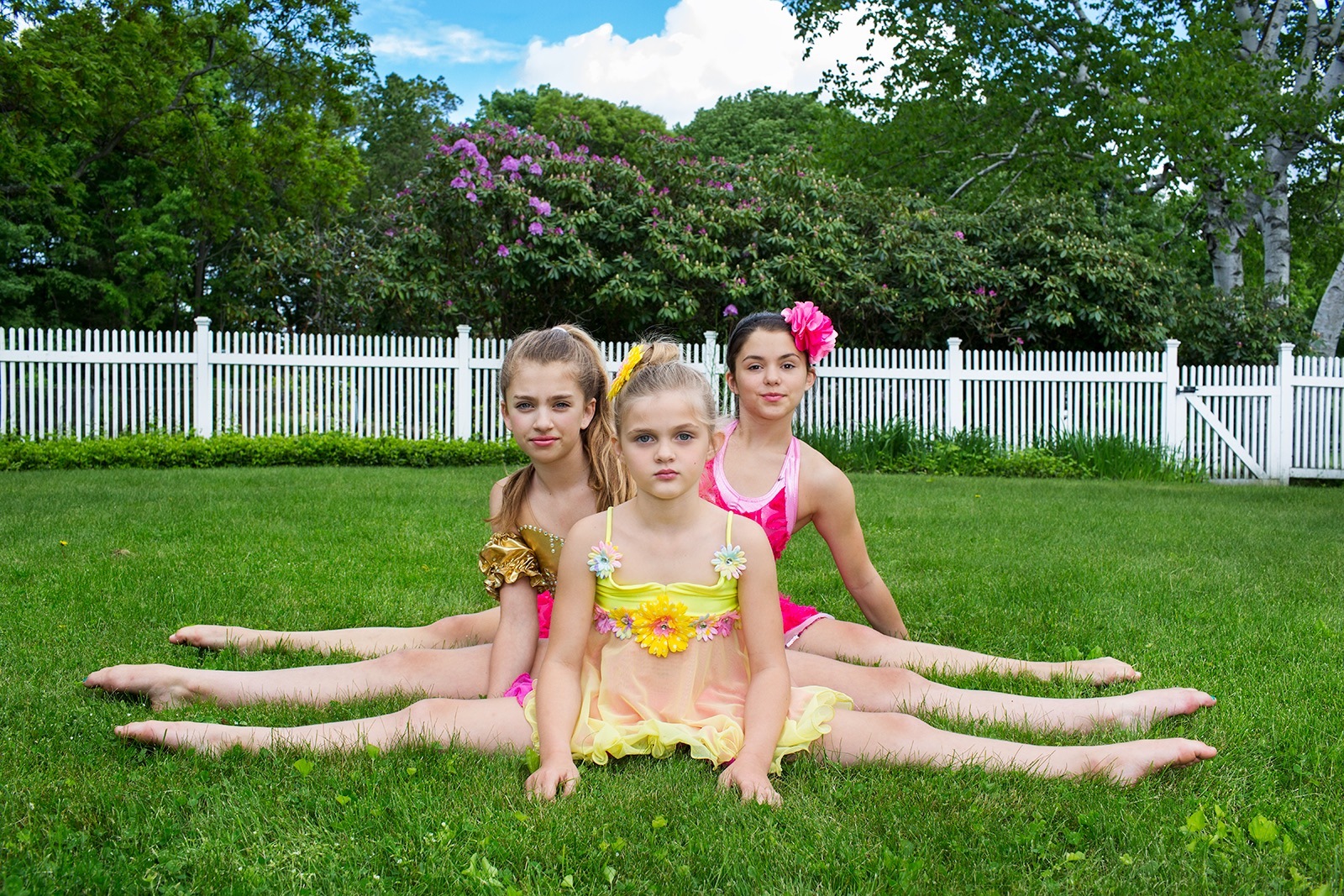In one of Isabel Magowan’s most striking photographs, three little girls in pastel leotards and hair bows do the splits in front of an actual white picket fence, the kind that you see in Greenwich and St. Louis and places like that. It’s part of her “Cygnets” series, mostly shot while she was a student at Yale’s MFA program, from which she has just graduated. A former ballerina from Manhattan, Magowan was thinking about the baby swans of Swan Lake when she shot these beautiful, sinister portraits of American dolls at play. There’s a crying girl surrounded by Beanie Babies, a mother adjusting her daughter’s pink dress, and small dancers in tutus.
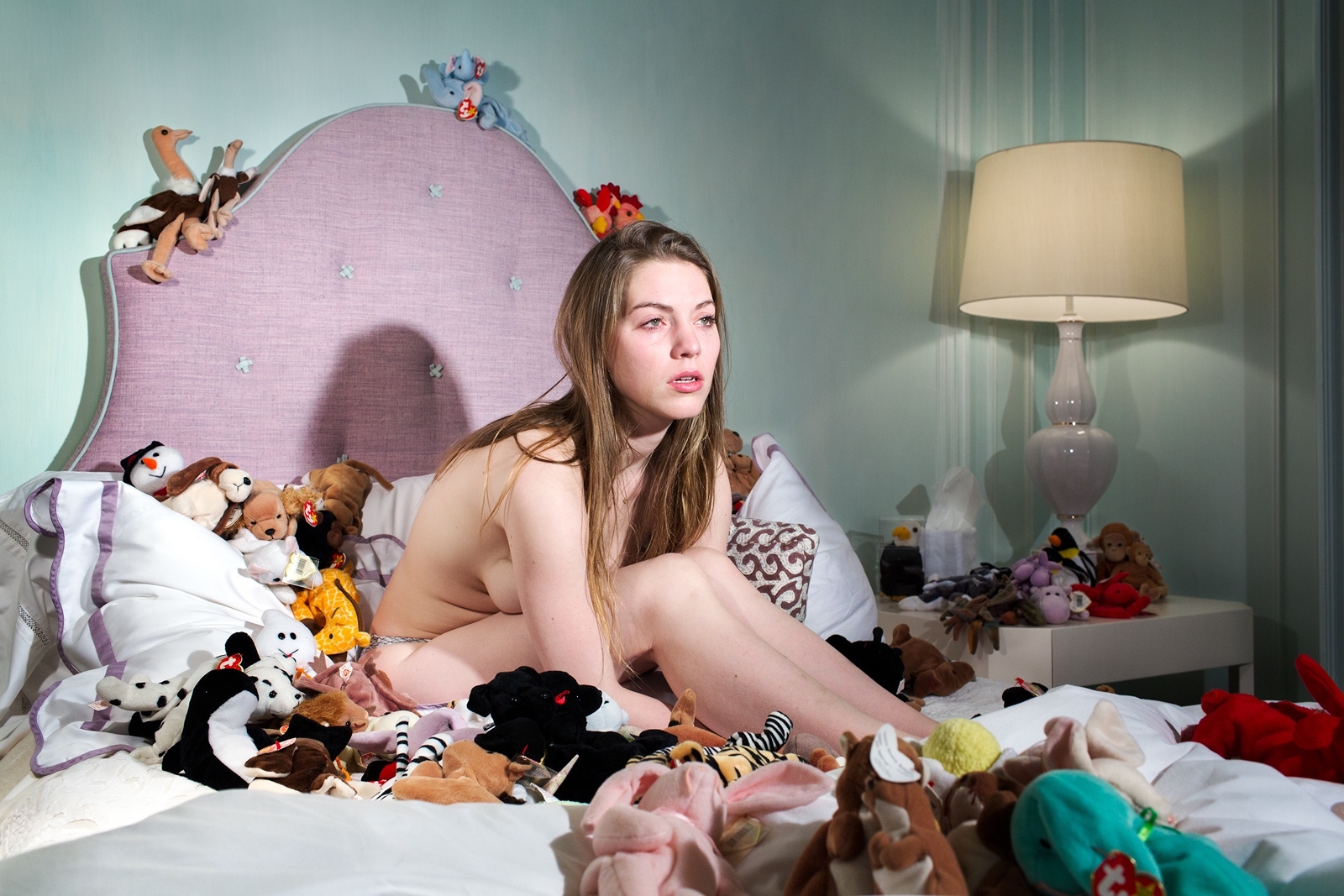
She was also thinking about the often dark nature of swans (and little girls). As a child Isabel would visit her grandmother, where there was a main house called Swan House (with swan-shaped salt and pepper shakers) and a guest house called Cygnets. Once, Isabel and a friend went swimming in the lake only to be attacked by giant swans. “They’re very scary animals, they really are vicious,” she remembers. That violent underbelly to picturesque settings is part of all of Isabel’s pictures. But her young subjects have agency – they can still decide how it all turns out. “They’re on the cusp of becoming adults and based on the messages they receive they become bitter or not.”
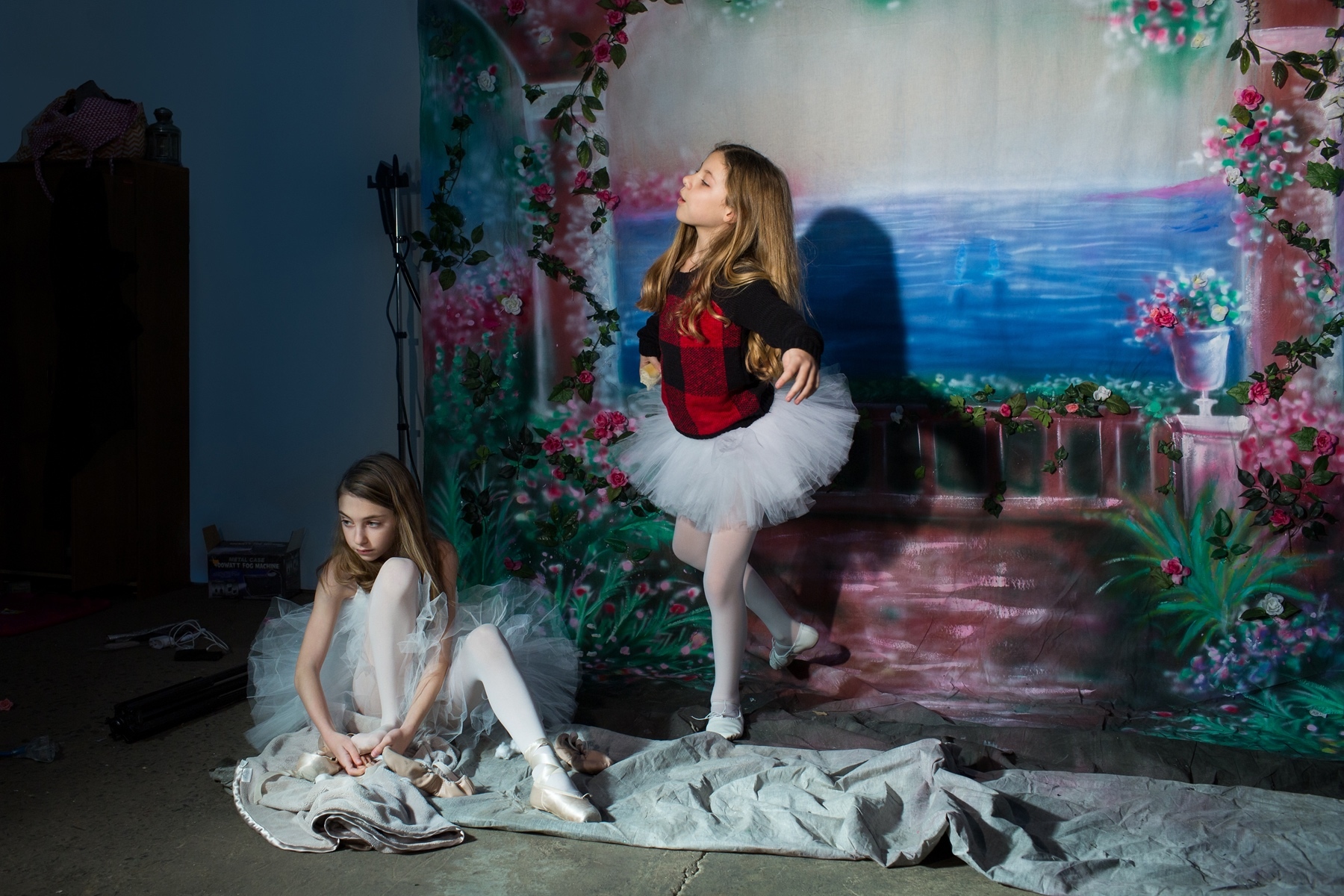
There’s a rich tradition of elegant women defecting from society to make art about it. Julia Margaret Cameron, Edith Wharton, even, kind of, Sofia Coppola. Isabel has only been taking pictures for three and a half years, but she’s moving in this direction, questioning and photographing the world she knows well. Most of Isabel’s pictures feature people she knows: her parents, her little cousins, her best friends.

“Part of the way I was raised is: you want to look okay on the outside, you don’t want people judging you,” she says. “As opposed to saying, ‘This is just how I want to be and that’s ok that I don’t look like these other people.’ It’s some weird upper middle class sensibility in terms of the themes that I’m interested in, that does have to do with my upbringing, like vanity, materialism, desire.”
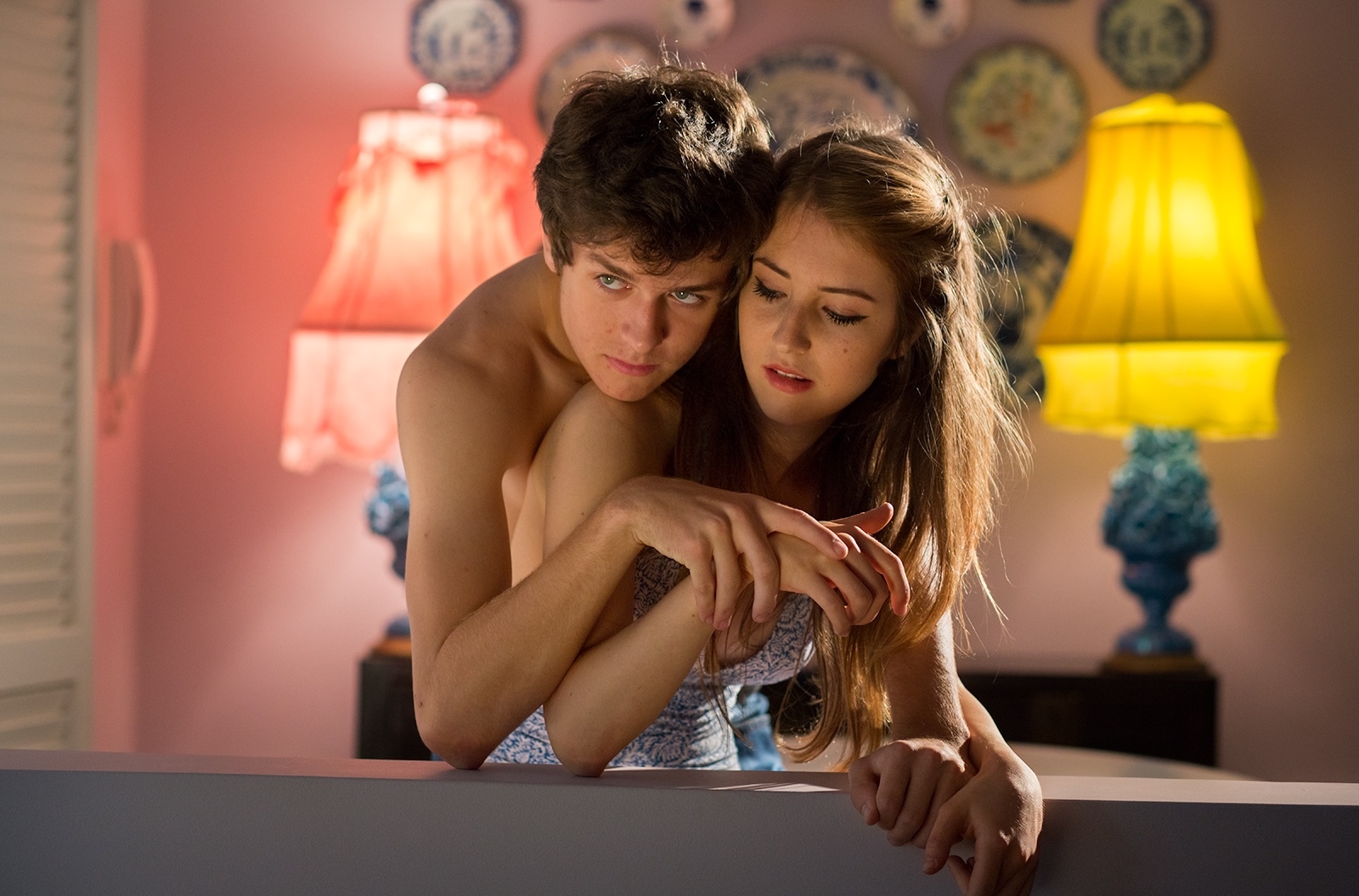
And most crucially, what happens when that Lilly Pulitzer-floral façade crumbles? “I’m interested in the idea of expectations, generally, but more specifically, the fall out,” she says. “What does it mean if we don’t want to live a life like we’re told to live?”
That fascination with the fall out comes from Isabel’s own life. When her picture-perfect ballet career ended (complete with multiple hip surgeries and soul searching), she had to figure out who she was. “When I quit, I definitely felt at odds because I’m not an academic, I didn’t make art. I just felt like this really weird, eccentric person without some sort of talent or avenue to express myself.” So she started taking pictures.
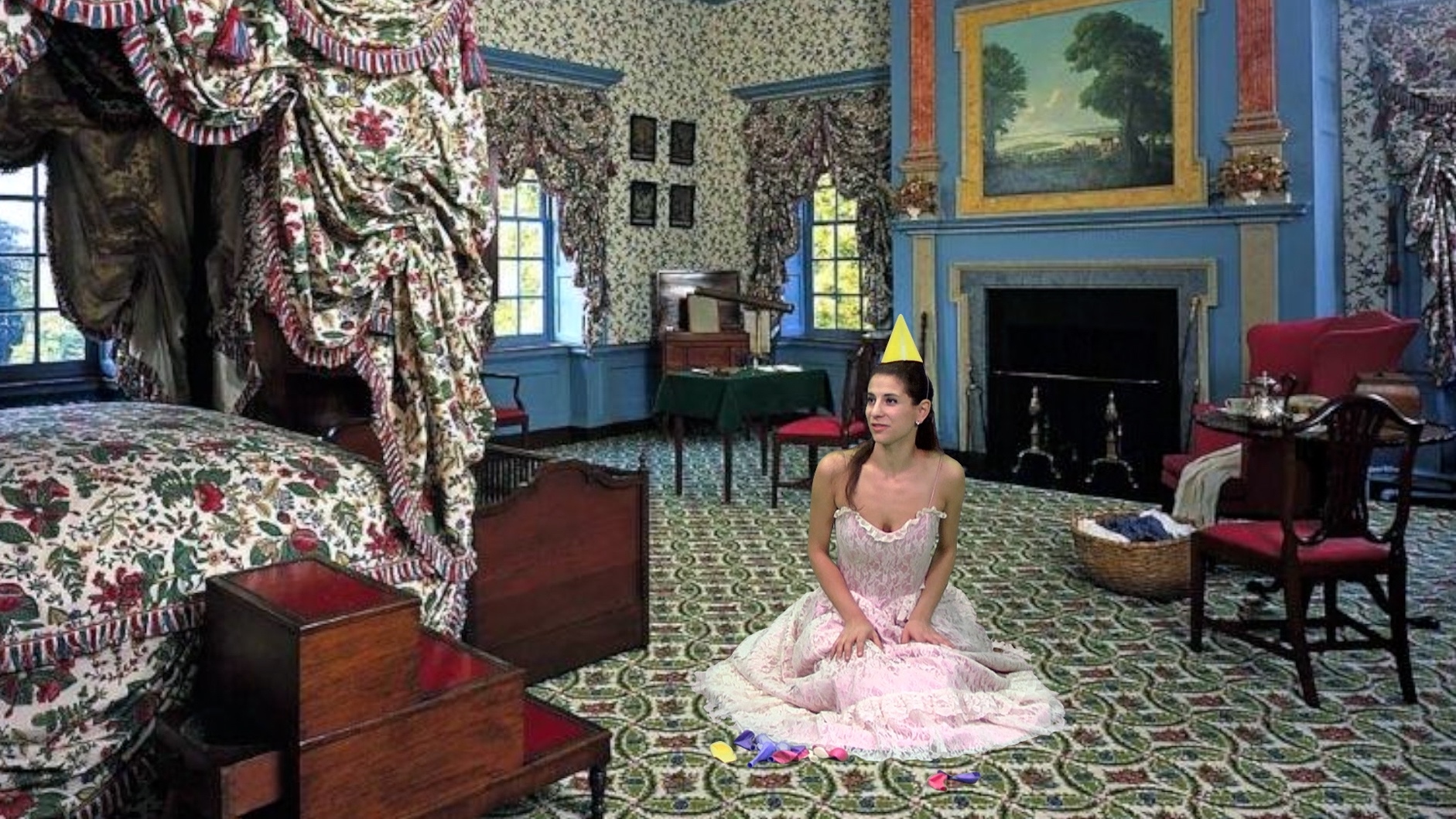
And making videos. Her film Cake Lady is a scary Hansel-and-Gretel-gone-mad tale of a nutty woman alone in a fairy tale kitchen. “I’m interested in artifice and constructed sets,” she says. “I always think about when we did The Nutcracker like 24 times in a month and a half. So, you’d be around all these sets. And then, we’d be on stage and have to pretend to eat these fake cakes and fake treats. And it’s all very seductive, but you can’t really eat them, they’re fake.” Other videos feature Isabel herself, in costumes and sets that feel like nightmare versions of Tina Barney photos.
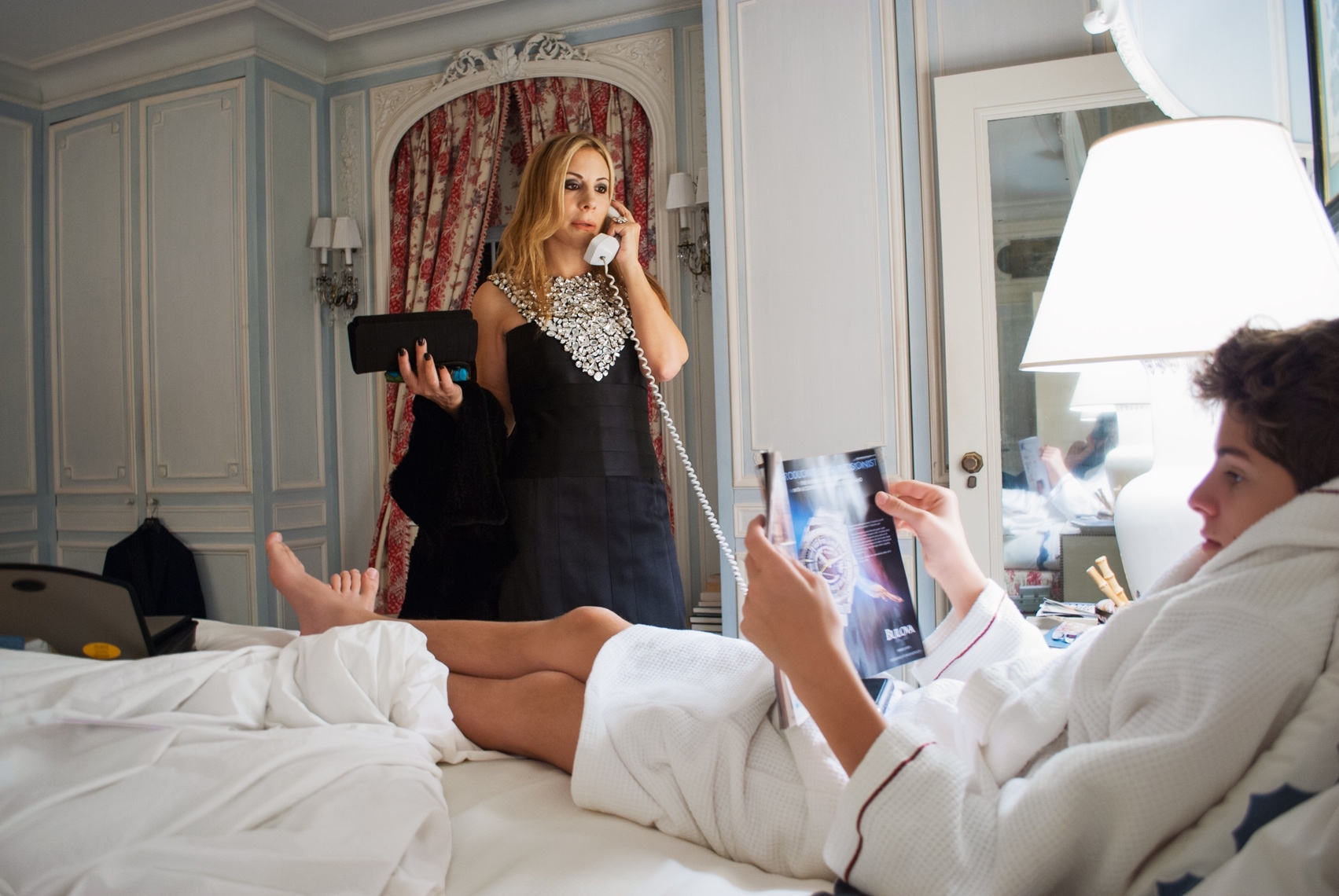
Isabel occasionally does professional head shots for her subjects as payment, and she has noticed that there’s often a moment where the mother is tweaking her child somehow. “It feels like it’s a caress but it’s also an act of control,” says Isabel. “I like that reality can simultaneously have both of those things happening at once. I don’t want to just be illustrative. I want to make things that can resonate and move people even if they don’t know why.”

Credits
Text Rory Satran
Photography courtesy Isabel Magowan
